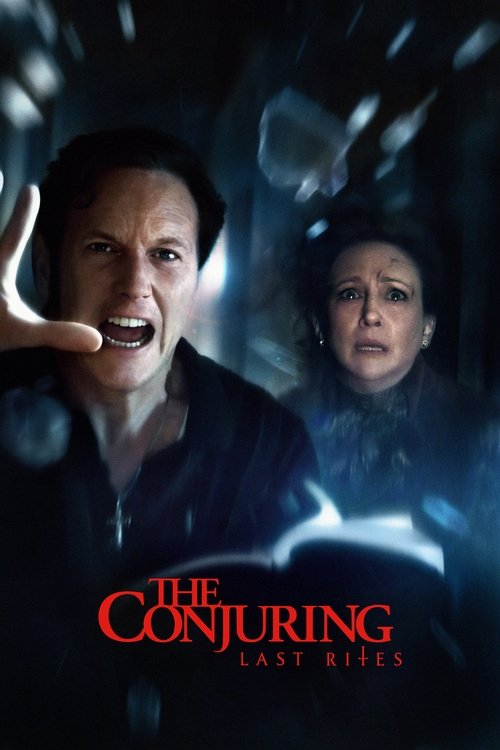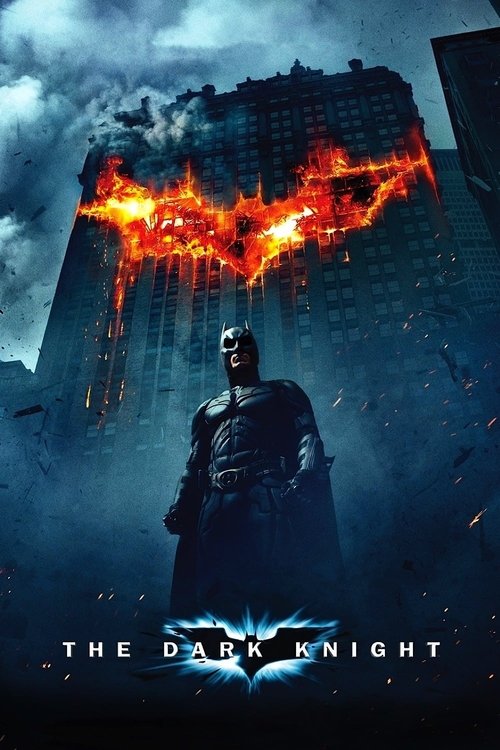
Ask Your Own Question
What is the plot?
In 1950, a man in a tailored suit forces his way into the Ito Dojo in Tokyo. He moves past wooden weapons on the walls and kneels before an aging instructor, calling him Shunsuke Ito. The intruder identifies himself as James Wright and demands to know the whereabouts of Benjiro Ito, the man who ran a prisoner-of-war camp during the war. Shunsuke listens, then answers that Benjiro is dead. James presses him to return a medallion that was taken from him years before. Shunsuke refuses at first and insists James demonstrate the fighting method he calls forbidden; the exchange triggers a memory and the story shifts back eight years.
In 1942, during the Battle of Bataan, Wing Commander James Wright pilots a Royal Air Force aircraft over the Philippines. Enemy fire rips through his plane; it spirals down and crashes into jungle. Japanese soldiers capture him after the crash. They bind his hands, strip him of his uniform, and deliver him to a nearby prisoner-of-war camp. The facility sits behind barbed wire and guard towers; Allied prisoners, emaciated and bruised, receive thin rations and endure physical abuse. Lieutenant Colonel Benjiro Ito commands the camp with a disciplined, cold cruelty. He instructs his officers to break the prisoners through forced labor and deliberate starvation. Captain Hirano acts as Ito's immediate enforcer, barking orders and carrying out punishments.
Shortly after arrival, Ito moves to humiliate Wright. He orders Captain Hirano to execute the newcomer as a lesson. Hirano escorts James into the dust of the exercise yard at swordpoint, instructs two of his soldiers to hold the prisoner, and raises a pistol. James fights. He turns the pistol's aim, seizes Hirano's wrist, and slams the man into a guardrail. He incapacitates the two soldiers who attempt to restrain him--one collapses with a broken neck after James throws him against a post, the other falls when James breaks his jaw with an elbow. Hirano draws his saber, but Wright knocks it from his hand and disarms him, killing Hirano in hand-to-hand combat. Wright bolts toward the tree line and tries to flee, but searchlights and bloodhounds run him down; guards subdue him and return him to the compound with fresh bruises.
Inside the camp, Ito watches Wright and orders further degradation. The officers have established underground fighting matches to pass time and to enforce dominance: prisoners battle one another in ringed dirt enclosures while guards and officers wager and cheer. Initially James refuses to participate. He witnesses the consequences when a group of men who organize a protest are forced into a threshing floor and executed: Ito lines them up and has them shot by a squad of riflemen for defiance. The spectacle forces James' hand; the camp leadership sends Wright into the ring to humiliate the prisoners by making him fight for entertainment. James has trained in Chinese kung fu while stationed in Hong Kong before the war; his techniques differ from the simple, brute brawling common in the camp. In the first match he enters, he uses a sidestep and joint manipulation to unbalance his opponent and pins him quickly. The guards, surprised, laugh and place wagers, but officers watching from the raised platform frown.
He faces Koji, the camp's reputed martial artist, in a later bout. Koji has physically dominated every other prisoner and is renowned for his power. Wright matches Koji's strength with agility and a series of rapid counters, breaking Koji's posture and dropping him on his back. The crowd's cheers turn to stunned murmurs when James disarms Koji with what Ito recognizes as a technique forbidden to the Japanese officers--an art taught by a master known to Ito. Captain Endo, Ito's chief enforcer alongside Hirano, bristles at this spectacle. Ito realizes the method Wright employs is not one learned in common training; he recognizes the lineage of the style. He questions Wright directly about his teacher, and when Wright refuses to name him, Ito's expression hardens.
Ito punishes those who fail him. After a subsequent match, two of Ito's soldiers attempt to defeat Wright themselves in organized sparring in hopes of regaining favor. They lose. To demonstrate discipline, Ito orders both executed; he arranges a public shooting and has camp soldiers stand them against a wall, then fires the volley himself after giving a precise command. Prisoners watch the men slump to the ground, blood darkening the dust. The executions serve both as intimidation and admonition: Ito will not tolerate weakness.
Amid the brutality, Wright forms bonds. He befriends Captain Richard Collins, an American officer who keeps a brittle, sardonic humor to conceal desperation. He also meets Sergeant Gabriel Villanueva, a Filipino NCO who works the labor details and maintains a wary, steady presence. Theresa, a local nurse compelled to tend to the wounded, slips contraband medical salves and small comforts to the prisoners under the nose of the guards. She moves among the infirmary beds and whispers updates about the surrounding countryside, quietly aligning herself with the prisoners' desire to resist. Collins tells Wright that rumors are circulating: the Japanese plan to transfer many of the Allied prisoners to an inland facility that will be harsher. Collins says the transfer will happen in one week. Wright accepts the urgency and begins to plan an escape.
Together, Wright, Collins, and Villanueva form a compact of escape. Theresa assists by sneaking bandages and letting them use the infirmary as a staging point. Wright scavenges parts and, in the dead of night, steals wiring and a small generator from an equipment shed. He fashions a crude receiver and, using a hidden antenna on the infirmary roof, repairs a confiscated radio set. One night he slips past a sleeping guard detail, climbs the infirmary ladder, and ticks the dials until he finds the static and then an Allied voice. He uses a coded transmission to request reconnaissance and supply drops, identifying coordinates and relaying troop dispositions he has noticed during labor detachments. The communication is terse and James records the time and frequency before the radio's batteries drain. He tells Collins and Villanueva the message is sent and that Allied aircraft may be alerted to the area in three to five days.
Ito learns of unusual radio interference and orders patrols to tighten. He sits for long hours counting the number of flyovers and instructs his lieutenants to prepare for possible Allied counterattacks. He grows irritable as rumors of incoming American planes spread among the guards; he sees the transmissions as a sign of failure in his control. Ito arranges extra inspections and the interrogation of prisoners associated with the infirmary. He beats two men suspected of tampering with equipment until they confess nothing; he later executes them publicly for "talking to the enemy" by ordering them shot in the morning drill.
As Allied air units approach, the prisoners accelerate plans. Wright scouts a downed American glider located near the perimeter piled in the marshes where a crash landing occurred weeks earlier. He and Villanueva crawl along night trails to inspect the glider's fuselage and find it sturdy enough to transport several men once repaired. They make a sketch and return to the barracks with plans to jury-rig the glider for a distraction rather than primary escape, intending to use it as cover during the allied bombing that James expects will create chaos. Collins accompanies them during the reconnaissance and when a lone Japanese sentry confronts the group, Collins reacts instinctively. He kills the guard with a single shot from a smuggled pistol when the man threatens them, then they drag the body into the reeds. They do not bring the pistol back to camp.
The murder of the sentry turns deadly for Collins. Word of the missing guard reaches Ito the next morning. Ito orders Collins removed from the ranks. He convenes a makeshift tribunal--two officers stand as judges. Facing a line of prisoners at the parade ground, Ito declares Collins guilty of murder and collusion with the enemy. Ito has Collins executed in the same manner he uses for dissidents: he orders a public hanging. They construct a gallows from camp timber, and at dawn Collins climbs the scaffold with a restraining noose around his neck. He offers a brief glance to Wright, who cannot stop the proceedings. The executioner releases the trapdoor; Collins drops and dies with a broken neck. The prisoners watch in silence as Collins' body swings, and officers file back to their posts.
The day of the bombing arrives. Allied planes roar overhead and the camp trembles under the concussion of heavy bombs dropped on nearby supply depots and guard barracks. The bombardment throws guards into disarray; barbed wire tangles and some watchtowers catch fire. Wright seizes the moment. He leads Theresa and Villanueva through a breach in the perimeter scorched by shrapnel. Theresa dispenses quick medical aid to wounded prisoners and slings packs of bandages onto Villanueva, who moves with tense purpose through the smoke. The three slip through a gap left by a collapsed fence and run across the pocked field toward the tree line.
Ito recovers control quickly enough to send a squad in pursuit. He draws his sidearm and rides his jeep along the perimeter as guards attempt to round up escapes. Ito spots Wright and drops from the jeep, blocking the path with a raised pistol and shouts at his men to halt their fire. He orders soldiers to cut down anyone who moves to free the prisoners in the glider area. Wright is forced to make a stand.
Ito and Wright face one another in the open amid charred grass and a scattering of bodies. Ito moves with formal military bearing; he carries a katana at his hip and spins it as a display. He calls Wright a thief and an upstart and demands his submission. Wright launches himself forward, opening with a feint that draws Ito's sword. He slips between sword arcs and responds with flowing counters and joint locks--techniques that Ito recognizes instantly. Ito meets each movement with short, controlled strikes and the two exchange a rapid, brutal sequence of blows and parries across the mud. Ito deflects a strike aimed at his ribs and counters with a sweeping cut that misses by inches. Wright answers with a knee strike that staggers Ito, then executes the forbidden technique he has used in the camp ring: a twisting arm lever that pins Ito's sword arm to his side and throws him to the ground. Ito tries to rise, but Wright locks his neck and forces him down, rendering his sword useless.
Standing over the fallen colonel, Wright holds Ito at the end of a technique that leaves Ito disarmed and breathless. Ito, chest heaving, looks up at Wright. Instead of ordering a kill, he signals to his men and shouts for them to lower their weapons. He acknowledges Wright's skill aloud, saying he will not have a great warrior killed in such a fashion. Ito steps back and salutes Wright with a stiff, private gesture. He orders his men to escort those still alive to their posts and allows Wright, Theresa, and Villanueva to run. Ito returns to his jeep and surveys the damage, momentarily silent. Guards subsequently regroup and the camp locks down, but the escapees slip over the marshes and disappear into the surrounding jungle as Allied aircraft continue to scream overhead.
After the raid, Ito returns inside the camp to stiff inspection. He knows the cost of letting Wright go; he also recognizes a code among fighters. He does not order a pursuit party to take Wright's head, and when the men who failed him in earlier fights complain, Ito silences them, stating that killing Wright would be to kill an equal. He confiscates Wright's medallion in an earlier interrogation and places it inside his private case as a spoils of war--an object he later displays for his officers to stress control. Wright makes his way to an arranged rendezvous with local resistance helpers and Theresa guides him and Villanueva through clandestine trails toward friendly pockets in the countryside. Collins' hanging, Hirano's death, and the public shootings become marks on the prisoners' memories.
The narrative returns to 1950 in the dojo. James waits while Shunsuke instructs a line of students. He tells the elderly instructor that his father, Benjiro Ito, took a medallion from him in 1942 and that he wants it back. Shunsuke repeats that Benjiro died years before of an unnamed illness; he says Ito passed away in his sleep after declining health and that the dojo keeps no trophies from the war. Shunsuke challenges James to demonstrate the technique the visitor claims is forbidden--he asks to see the sequence that Ito recognized. James obliges; he moves into a calm stance, breathes slowly, and begins the set of maneuvers he used at Bataan. He performs evasions, feints, and the specific arm-lock that unseated Ito eight years earlier.
Shunsuke steps forward and meets James in a controlled sparring exchange. He tests James with precise counters and then accelerates; his students watch silently as the two men trade measured blocks and strikes. Shunsuke attempts to replicate Ito's aggression with a series of heavy, formal strikes. James counters with the same forbidden motion that once subdued Ito, and he moves through Shunsuke's defenses with the practiced ease of a man who has fought for survival. He executes the final pin, pressing Shunsuke's shoulder to the dojo floor. Shunsuke yields, and James rises.
Shunsuke rises as well and reaches inside a wooden cabinet where he has kept a small case. He opens it and removes a medallion--the same piece James says Ito stole from him. Shunsuke hands the medallion to James with quiet hands and no flourish. James inspects the worn metal and then turns to leave. Before he exits, Shunsuke speaks a few clipped words: he reiterates that Ito died long after the war from illness and that he had lived with regret for harboring a trophy taken in the field. James takes the medallion, tucks it into his palm, and walks out of the dojo into the Tokyo light. The story ends with James stepping onto the street and the medallion visible in his hand, the events of Bataan and the years between carried with him as he departs.
What is the ending?
The movie Hand Picked (2025) does not appear in the search results, and no detailed plot or ending information is available for it specifically. The search results include summaries and endings for other 2025 films such as Companion, You Picked the Wrong One, Sinners, and Him, but none correspond to Hand Picked.
Therefore, I cannot provide a factual, detailed narrative of the ending of Hand Picked (2025) based on the available data. If you have any other questions or need information on a different film, please let me know.
Is there a post-credit scene?
The movie titled Hand Picked produced in 2025 does have a post-credits scene. This scene serves as a teaser hinting at a potential sequel, setting up future storylines beyond the main film's conclusion. Unfortunately, detailed description of the content or visuals of this post-credits scene is not explicitly provided in the available search results, but it is confirmed that it exists and is significant for fans interested in the continuation of the story.
What specific event triggers Iris to kill Sergey in the movie Hand Picked (2025)?
Iris kills Sergey in self-defense after he attempts to sexually assault her at the lake during their weekend getaway.
How does Josh control Iris and what is revealed about her true nature?
Josh reveals that Iris is a companion robot rented from Empathix, whose emotions and intelligence can be controlled via an app on his phone.
What modification has Josh made to Iris and what is his plan involving the money?
Josh has jailbroken Iris with an aftermarket modification that increases her aggression and disables her inability to harm others, intending for her to kill Sergey so he and Kat can steal $12 million from Sergey's safe.
What happens when Iris escapes and boosts her intelligence?
After stealing Josh's phone and fleeing into the forest, Iris boosts her intelligence from 40% to 100%, which leads to a violent confrontation where she shoots and kills Eli during a struggle.
What is the relationship dynamic between Patrick and Eli, and how does it affect the plot?
Patrick, who is also a companion robot, admits he knows his nature but loves Eli regardless; this relationship adds complexity as Patrick and Eli try to find Iris, culminating in Eli's death during the conflict with Iris.
Is this family friendly?
The movie titled Hand Picked produced in 2025 is not listed among the family-friendly or children's movies in the available 2025 movie release guides and family movie roundups. There is no direct information indicating it is specifically family-friendly or suitable for children.
Because of the lack of explicit family-friendly classification or detailed content descriptions in the search results, it is not possible to confirm that Hand Picked is appropriate for children or sensitive viewers. No specific potentially objectionable or upsetting scenes or aspects are documented in the sources provided.
If you are considering Hand Picked for children or sensitive viewers, it would be prudent to seek out detailed content advisories or parental guides from trusted movie rating organizations or reviews once the film is released, as no such information is currently available.











